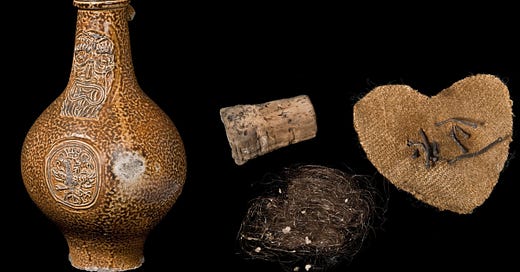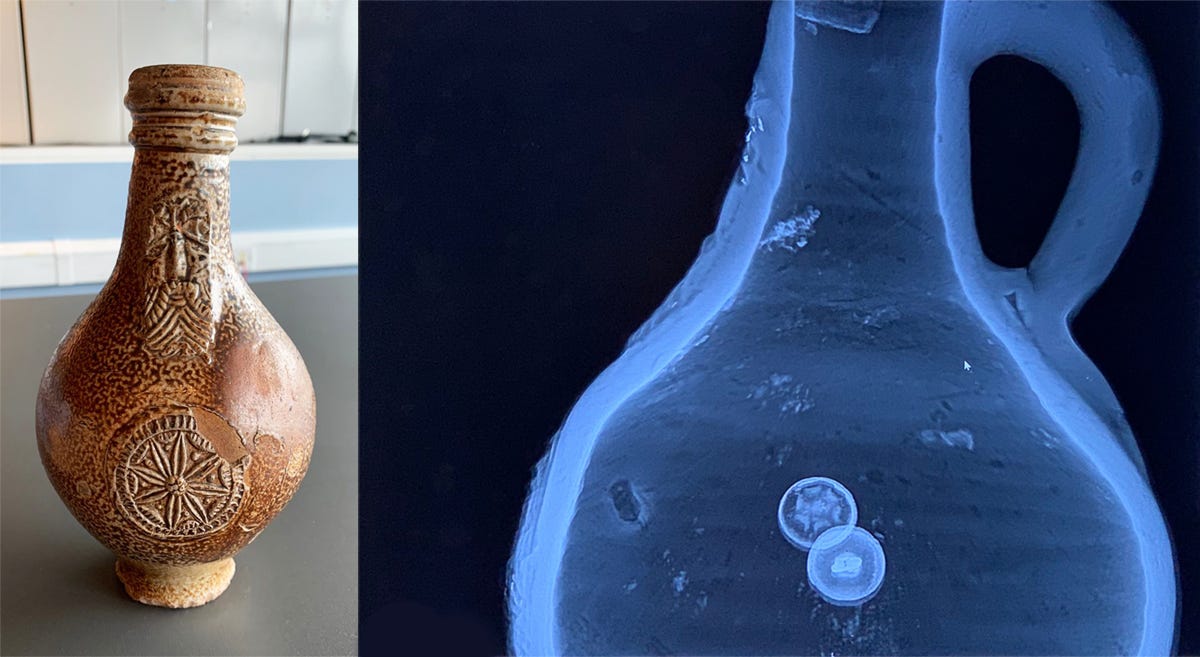Issue 19: the 17th Century prescription at the border between magic and medicine
How a first-of-its-kind study is uncovering the origins, patterns, and peculiarities of witch bottles.
In the mid-late 17th Century, if you found yourself afflicted by an illness that conventional medicine and prayer wasn’t curing, you might conclude that you’d been cursed, bewitched. And you might be inclined to seek out your local cunning man or woman, who could prescribe you a witch bottle.
They’d tell you to fill a bottle with personal objects and outputs (hair, fingernail clippings, and often, urine!) and sharp items such as pins and nails; to seal it and bury it.
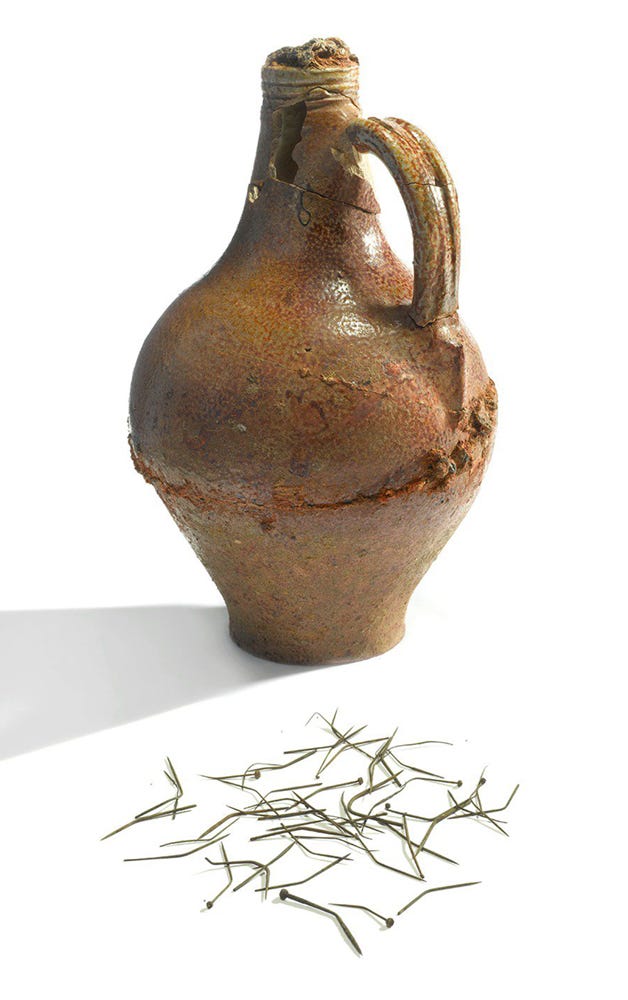
Witch bottles are a form of sympathetic magic.
It was thought that when a witch cursed a person, a connection was created between the two. The idea of the witch bottle was that by combining items intimate to the cursed individual, with items that could do harm, it would cause pain to the witch, forcing them to break the curse to stop the pain; or the pain would kill the witch, breaking the curse in the process.
“Witch bottles are on that very strange border between magic and medicine,” says Dr Ceri Houlbrook, Lecturer in Folklore and History at the University of Hertfordshire.
“They came during a time when people believed in lots of things simultaneously. A time when there was fear of witches, but also when ideas of science and medicine were being used to counteract them.
“[Witch bottles] were prescriptions for somebody who believed themselves to be bewitched, which was seen as an illness.”
Dr Houlbrook is one of a small team of experts currently exploring the witch bottle practice and its origins, as part of the Museum of London Archaeology’s (MOLA) ‘Witch bottles concealed and revealed’ project.
So far, they have identified at least 200 specimens that can be described as witch bottles in public and private collections in the UK.
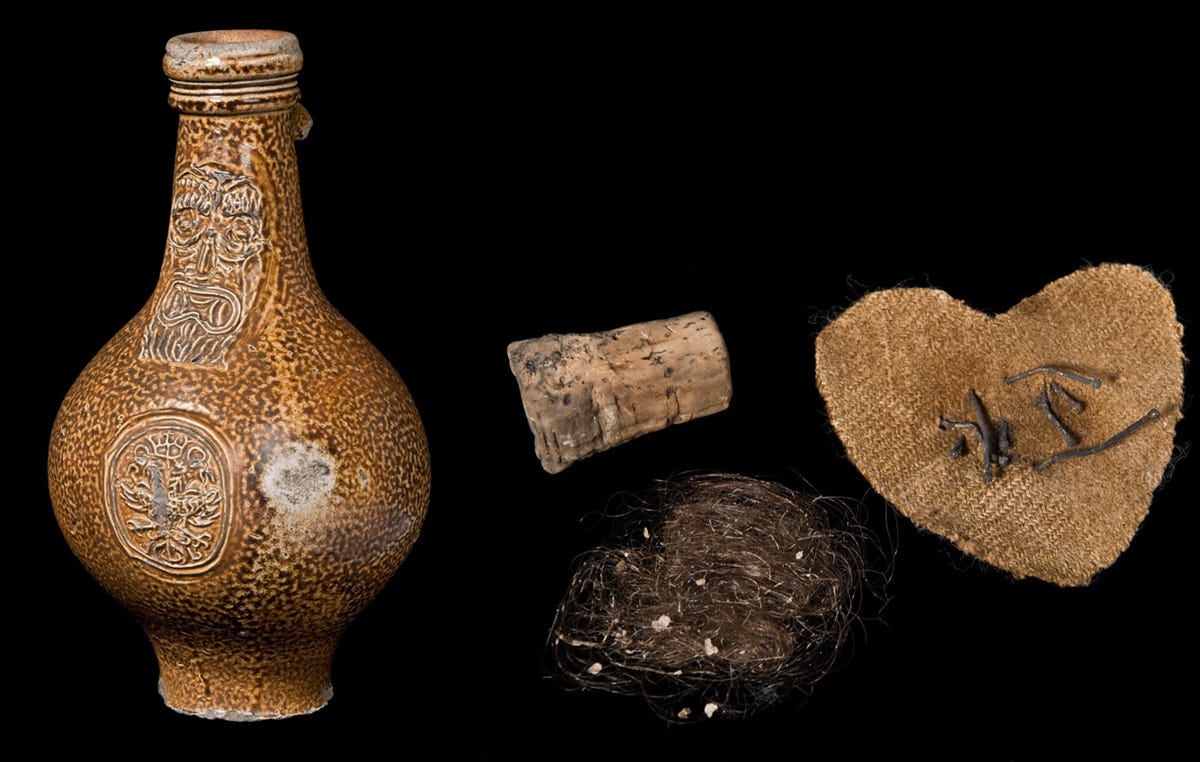
Interestingly, most of those witch bottles have been found in southern and eastern England.
“To be honest, I was hoping at the start of the project that we would come across a lot more northern examples. I thought that maybe the reason why we had so many examples from the greater London area was because that’s where the researchers who were initially interested in this subject were based. But actually, no, it's looking like it was mainly a southern custom.”
She says her project partner, Owen Davies – “an absolute detective” at finding obscure archival references – has identified a small group of people who seem to have established the practice of prescribing witch bottles.
“For something that we feel is a very widespread, long-standing custom, actually, we think it was a handful of individuals who were really leading the way. These cunning folk were based in the south and it was their rituals, their preferences, that have shaped the practice. You go to the northern counties, and I guess different recommendations – different prescriptions – were being given.”
But while the geographical spread might be limited, the locations the bottles have been found demonstrate “a real mix”. Like other ‘concealed’ objects, many have been found in buildings – under floors, fireplaces and thresholds – but also:
“A lot of them were just buried outside, in fields, riverbanks, or within rivers. A lot of people have found them buried in gardens and churchyards.
“The overriding notion seems to be that it just needed to be buried somewhere where it wouldn't be disturbed. It wasn't about putting it in the home to protect the home, but just putting it somewhere where it wouldn’t be found, somewhere where nobody's going to accidentally stumble across it and then open it and render it ineffective.”

Hundreds of years may have passed since the witch bottle practice was at its peak, and advances in scientific thought have rendered belief in curses as superstition, but the witch bottle can still wield power.
During the coronavirus lockdown, Dr Houlbrook and the project team partnered with the Pitt Rivers Museum to live stream the opening of a witch bottle, to thoroughly document its contents.
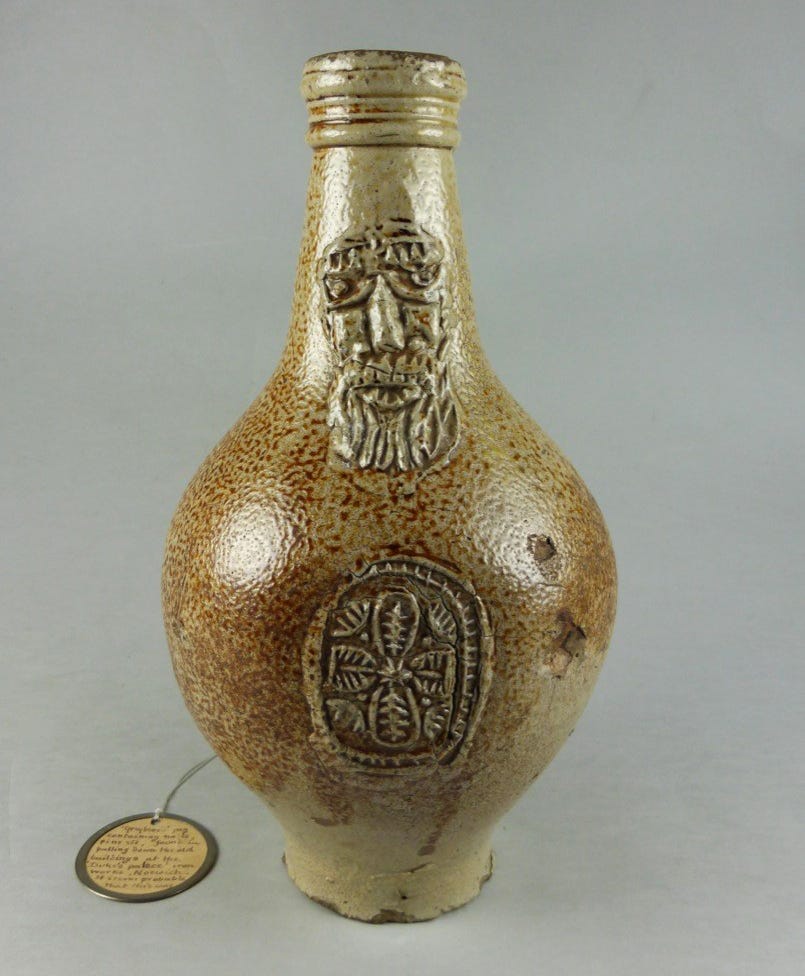
Despite the bottle having been added to the museum’s collection many years ago, previously opened and its contents removed, examined, returned, and the bottle resealed, there was “a lot of genuine anxiety” about opening it again.
“People’s responses were incredibly fascinating. There were so many comments on the video, people saying: ‘Why would you open it?’, ‘Don't open it, refill it, put it back’.”
Spoiler: nothing bad happened, and the bottle’s contents were consistent with descriptions from when it was originally opened by the museum (“although we got a lot more detailed photographs of it and a lot more detail in terms of quantities of objects”). But, Dr Houlbrook says, “what interested me was people's responses to the fact that we opened it”.
“It was so evocative and there is clearly still so much belief and fear around these objects.”
The ‘Witch bottles concealed and revealed’ project can help dispel such misapprehensions. Dr Houlbrook and her partners’ work is the first ever comprehensive study of the witch bottle practice. They’re documenting chronology, bottle types, locations, contents, as well as historical textual evidence about the creation of and recipes for witch bottles.
As the project website notes: the practice has never been fully contextualised, with previous scholarship portraying witch bottles as random and individual acts to ward off or trap witches.
“We’ve visited most of [the 200 bottles] now, we’ve got most of the data, and now it's time to start tracing the patterns, and get all that information – where they are in the country, where they're currently being stored, their contents – in one place, and as up to date as possible.”
The findings will be brought together in an open access publication.
It’s worth noting: “The idea that people have in their minds when it comes to witch bottles, is of the Bellarmine jug – the stoneware with the bearded face on it. But it doesn't have to be a specific type of bottle. They were just a convenient type of bottle, quite sturdy, quite popular, but other types of bottles were being used, too,” Dr Houlbrook says.
Although the MOLA project is formally in its final year (it was extended by 12 months due to the pandemic), Dr Houlbrook says it will never truly be over.
“We’re always going to want to hear about new witch bottles.
“One of the most recent ones we've looked at contained a button, which doesn't sound particularly significant, but why a button? Was the button being worn by the person who was ill? Was it another kind of connection to them?
“All these tiny little details give us a lot of insight into what these cunning folk were prescribing, and people's beliefs at the time.”


